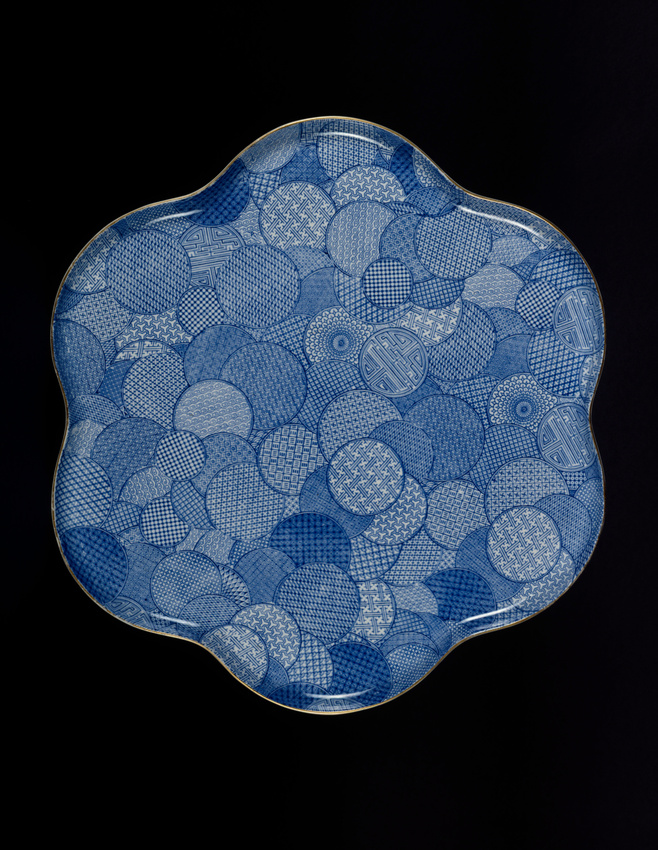Plateau, sercice "Bristol"
The success of the Worcester porcelain factory, which was highly acclaimed at the Universal Exhibitions of 1873, 1876 and 1878, owed much to the personality of Richard William Binns who from 1862 ran it almost single-handedly. The pieces he developed particularly reveal his admiration for the Orient, blending Persian, Indian and Sino-Japanese sources.
After the Vienna Exhibition in 1875, Worcester porcelain with Japanese influenced designs was greatly admired. At the Philadelphia Exhibition three years later, Binns bought many Japanese ceramics, hoping to use them as models.
His keen interest in Japanese art was evident in all kinds of picturesque transpositions or, as here, in more radical creations. This tray, with its purely abstract, monochrome decoration – overlapping disks in the style of motifs published at the same time by Thomas Cutler in his Grammar of Japanese Ornaments – is a perfect illustration of this geometric Anglo-Japanese style perfected by Godwin and widely distributed by industrial manufacturers around 1878-1880. From an unusual model, this tray was probably intended to complete a Bristol service, comprising teapot, cream jug, sugar bowl, small bowl and six cups. The whole set could be placed on a pivoting tray curiously known as a Lazy Susan.
